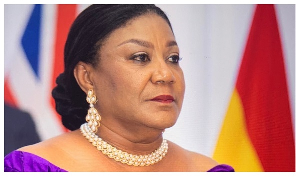The Country Director of the World Bank, Pierre Frank Laporte, has asked the government to ensure transparency in the debt situation of the country.
He told Alfred Ocansey on the Sunrise show on 3FM 92.7 Thursday, May 28 that the government will have to give full information on the debt to the public.
He said the government should introduce “Measures that improve on its debt management framework, it improves the transparency , we need to give full information out there to the public.”
The latest March 2020 Bank of Ghana Summary of Economic and Financial Data revealed that Ghana’s total public debt increased by US$300 million in March 2020 to US$43.4 billion,
This debt is more than half the total size of the country’s economy.
In cedi terms, the nation’s debt jumped from GHS228.4 billion in February 2020 to GHS236.1 billion in March 2020, about 59.3% of Gross Domestic Product.
The external debt component was US$22.9 billion (GHS124.8 billion), representing 31.4% of the total debt.
The domestic debt component was GHS111.3 billion, representing 28% of GDP.
In December 2016, Ghana’s debt was GHS122, representing about 62% of GDP.
This was based on the old economic value of the country.
However, at the end of September 2019, Ghana’s public debt had risen to about GHS208.6 billion, representing 60.3% of GDP due to the rebasing of the Ghanaian economy.
Comparatively, Ghana’s debt stood at GHS42 billion in 2012. In 2008, Ghana had borrowed only GHS9 billion.
Largely, the monies borrowed are used to repay maturing debts (interest and sometimes principal) with little going into infrastructural projects.
The International Monetary Fund and the World Bank had warned that Ghana faces a high risk of becoming a debt-distressed country.
Ghana’s debt is projected to hit 63.3% of GDP in 2020 but will decline to 60.2% in 2021.
Click to view details



Business News of Friday, 29 May 2020
Source: laudbusiness.com

















